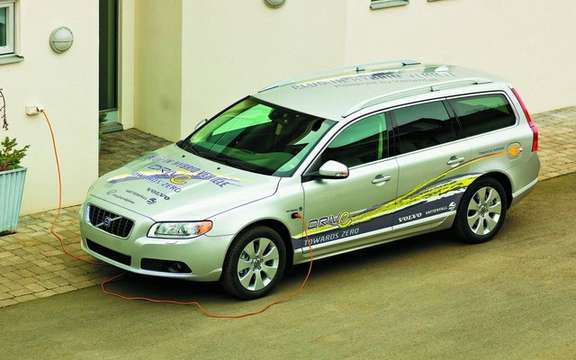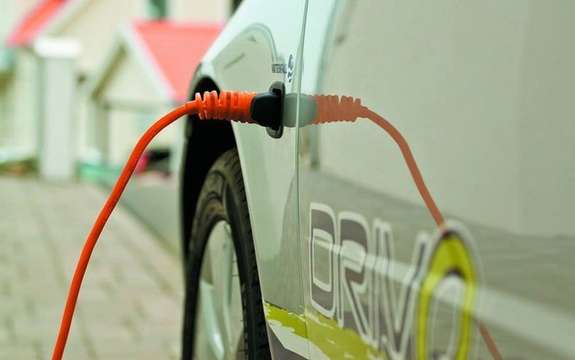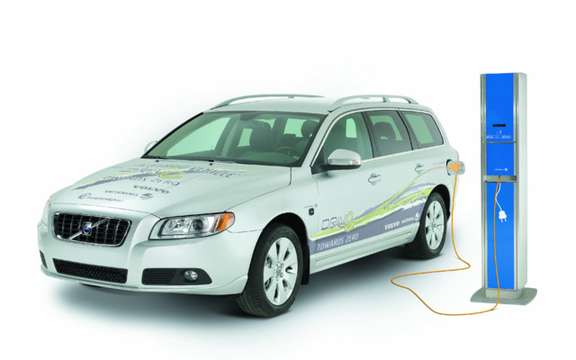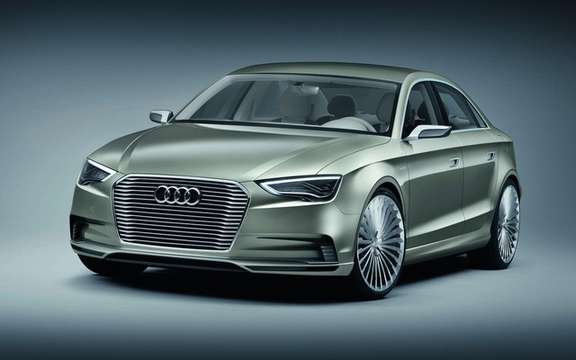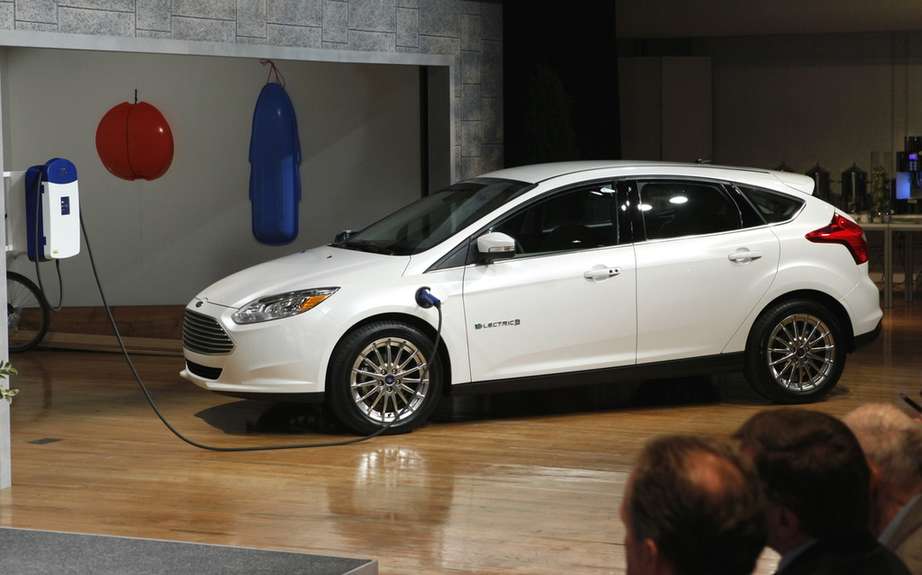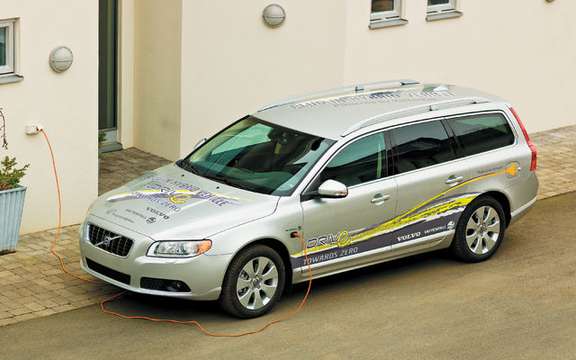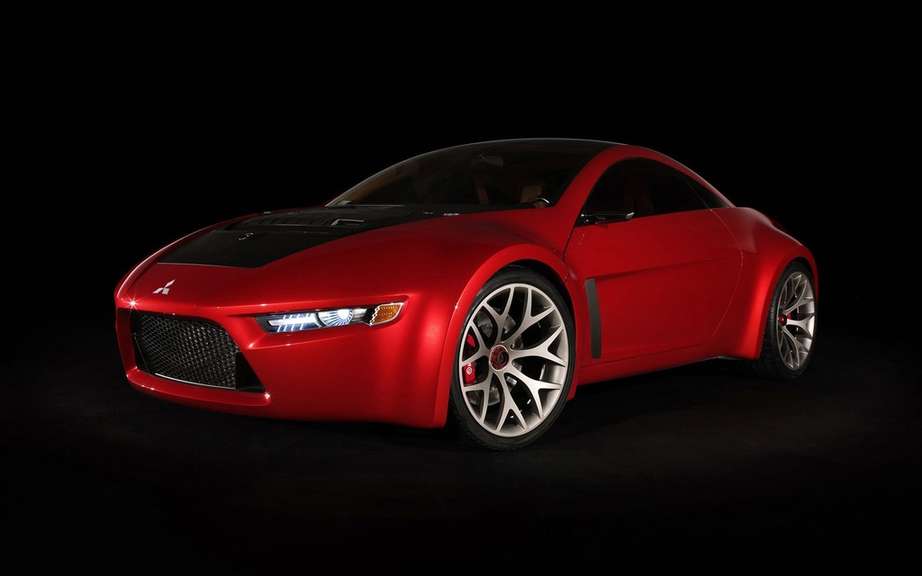Volvo wants to launch its first plug-in hybrid models for 2012
Who will be the first manufacturer to offer a model rechargeable hybrid drivetrain?
In all likelihood, with its rechargeable Prius Toyota and General Motors, with its Chevrolet Volt devraientt offer this technological approach during 2010, but again, nothing is cast in stone. Now, however, the Swedish manufacturer Volvo has announced its intentions to turn market in 2012 its first models powered by a hybrid powertrain has rechargeable batteries. In this adventure, Volvo is associated to the Swedish company Vattenfall specialized in the supply of electricity.
The engineers chose the Volvo V70 has plan to develop this new clean technology. Deja three prototypes to circulate découvir road, the advantages and disadvantages of this approach.
For the occasion, the manufacturer uses a clean diesel engine combines a motor elrctrique him even mate has a new rechargeable battery. Which can be recharged through a household outlet or a terminal specifically designed for this purpose. Rechargeable hybrid car can under the circumstances, only a roll with his atmospheric engine, or only to electricity and with the complicity of the two sources. In fully electric mode, it will receive a maximum range of 50 km, and answering the daily needs of the vast majority of motorists worldwide.
It is expected the same, enjoy the network of dealers of the brand to serve as electricity suppliers.
To learn more, here is the content of the press release issued by Volvo France
--------------------------------------------------------------------
Volvo is preparing to launch a "plug-in" hybrid car in 2012. Purely electric power supplied from the battery will cover the daily needs of 75% of the european drivers. Over longer distances, exceeding the battery, a high-performance diesel engine automatically takes over. The combined range of the two modes of propulsion is about 1200 km. In releases of carbon dioxide and average fuel consumption, they will be located respectively 49 g / km and 1.9 l/100 km.
For Volvo, it is absolutely certain that in the future, the Customer still wish comfortable and safe cars, taking the road well and a generous capacity of transport, passenger and baggage as this, regardless of their mode of propulsion, whether electric or otherwise.
Hybrid "plug-in" is in this respect an offer more attractive because they combine the best of both worlds, that of the pure electric propulsion to that of a conventional engine with a key consumption and CO2 emissions very low and a high degree of autonomy and excellent performance.
"The new Volvo hybrid" plug-in "will be very pleasant to drive and offer the same standards of comfort and safety as other Volvo. Concurrently, its CO2 emissions and fuel consumption will be halved compared to what currently exists in the market, "says bluntly Stephen Odell, CEO of Volvo Car Corporation.
The advantages of a hybrid Volvo "plug-in" are:
* Consumer costs for the use and very low CO2 emissions
* Car with all the qualities and the convenience of other Volvo
* Recharge very EASY on the electrical network via a simple household outlet
* Volvo efficient and very pleasant to drive
Electric propulsion and CO2 emissions close to zero
The electricity is well suited to automotive propulsion. The efficiency of an electric motor is very high and its energy consumption is roughly a fifth of that of a similar engine using fossil energy. Volvo hybrid "plug-in" will be powered by a robust electric motor fed by a lithium-ion battery. An electric power from a recuperateur of energy generated each braking completes the system.
The battery is charged - in about five hours - the most practical way that is, at home, on a socket quite ordinary. The electricity is a less expensive source of energy than gasoline or diesel, which leads to less consumer of pupils user fees.
Full autonomy of a Volvo hybrid will be about 1 200 km, roughly that of a conventional diesel car. She can ride some 50 kilometers in pure electric mode, then only rejecting any Exhaust gas or particles. If the battery is recharged by an electric current from renewable sources, net CO2 emissions will be close to zero, even if one considers the entire life cycle of the car. Volvo dealers also offer their clientele a hybrid "plug-in" a specific contract for the supply of renewable energy. This agreement is the result of a collaboration with a partner, the Swedish electricity supplier Vattenfall.
A diesel engine has high performance propellant complementary
In complement the electric motor, one of the most efficient diesel engines Volvo also found under the hood, optimized for power also run on renewable synthetic diesel and meeting all standards presented and come to matter emissions.
The diesel engine can be run separately or at the same time the electric motor for optimal energy use. Thus, for example, the diesel engine can support or replace electric motor when high speed or decrease battery, while the electric motor may propose to the additional engine torque at low revs. The optimal combination of these two energy sources allows us to offer the driver a vehicle efficient and pleasant and reliable use.
Most car journeys - often going to or from work - are relatively short. This means that the next Volvo hybrid "plug-in" will satisfy no problem in electric mode, the needs of the most motorists. Over longer distances, the diesel engine takes over, will the car has the same behavior and the same autonomy as any conventional diesel car.
On after the standard driving cycle NEDC certify the CO2 emissions of a hybrid Volvo "plug-in" will be less than 50 g / km. The remaining below 50 g / km of CO2 cars are likely to benefit from tax incentives in many European countries. Apart from the tax reliefs, these countries offer a discount of about 5,000 euros on the purchase price of the car, a trend that could become the norm elsewhere in Europe.
"We focus on the" plug-in "hybrid to meet the demand for vehicles emitting low CO2 emissions and provide a sustainable mode of transport. Naturally, we hope that the competent authorities will provide the right amount of subsidies to stimulate technical developments and accelerate the creation of a market for this type of car, "says Stephen Odell.
Electric current capabilities cover the requirements
Hybrid "plug-in" consume less electricity than do most people think. In reality, only one plant has medium sized wind turbines can produce enough electricity to cover the annual consumption of 1 000 2000 hybrid "plug-in" in common use. Well even when a very large number of hybrids of this type would drive on our roads, the current power grid has enough power. If 15% of european cars were hybrid "plug-in" requirements total electric output would increase by only 1 to 3%.
To compensate for this, the energy savings in households, just by cutting televisions and PC overnight and changing lamps incandescent light bulbs has, for example, probably would suffice. Nothing should be changes to existing networks. Illustrating this state of affairs, energy improvements achieved by Volvo Cars has its plants in Ghent and Gothenburg during the past four years correspond to the annual electricity supply of 15,000 hybrid cars "plug-in".
Hybrid "plug-in" a potential market
The purchase price of a "plug-in" hybrid car should be considerably higher than that of a conventional diesel car, at least for some time. At issue: the price still pricey batteries. The cost of electricity consumed will be about one third that of diesel, which partially offset the difference in purchase price but not completely.
Volvo Cars believes that hybrid "plug-in" will be commercially viable for certain categories of consumers in 2012, the market gradually widening as and measuring the decrease in the cost of batteries and their performance improvements.
A proven development technology, faster availability
At the moment, Volvo Cars has postponed its plans to produce what is known as a full hybrid vehicle based on a diesel engine.
The strategy implementation by Volvo to start serial production of cars "plug-in" of 2012 is to exploit already existing equipment and experience (including a number of major components such as the shell and the heat engine). Instead of waiting for the arrival of a new generation of models, the brand preferred save time by embodying cutting-edge solutions to install the battery and the electric motor with the dimensions of a conventional powertrain (architecture called parallel). In this way, this new technology can be put much earlier serving motorists.
Hybrid "plug-in", the result of an industrial cooperation
In January 2007, Volvo Cars and the Swedish electricity supplier Vattenfall launched a joint project to test and develop the technology of domestic charging. Following this inter-industry initiative, V2 Plug-in-Hybrid Vehicle Partnership was created.
Create entirely new and very favorable to the development of the next "green" technology conditions, the foundation of this new joint venture with Vattenfall's result. Working in partnership is considered by Volvo as an absolute necessity in shaping a lasting and sustainable future.
Source: Volvo France via Autopressinfo
View the gallery
